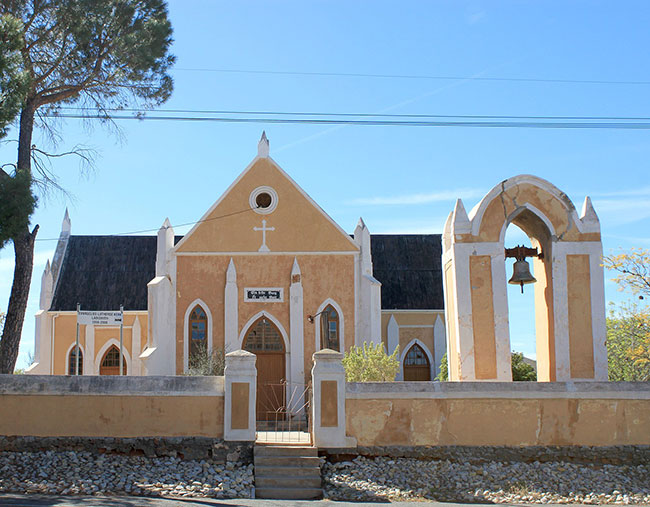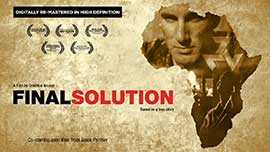BLACK LUTHERANS UNIFYING IN SOUTH AFRICA ARE GASSED

[Above: A Lutheran Church complex, Ladismith, South Africa—PeterJRobson / [CC-by-SA-3.0] Wikimedia File:Lutheran Church, Lutheran Church complex, Ladismith.jpg]
WHY TEAR GAS?
European emigrants and Lutheran missions from Europe and America brought Lutheranism to southern Africa beginning in the eighteenth century. Separate groups of Lutherans developed. In the 1960s, several of these Lutheran strands discussed a merger, but White Lutherans were unwilling to unite with Blacks.
The Black Lutherans, while keeping alive their invitation to the White groups, decided to unify their own churches. By 1974, discussions reached fruition. Delegates worked through the details of a proposed unity constitution. They unanimously accepted the draft and set a date the following year for final discussions and a vote.
The long-awaited meeting arrived on 15 December 1975. Between 15 December and 20 December, delegates gathered in Rustenburg, Tlhabane, to formalize the merger and adopt their constitution. At the start, four Lutheran regions were involved, but a fifth was added during the conference. White Lutherans still refused to participate.
On this day 18 December 1975, the Evangelical Lutheran Church of South Africa (ELCSA) adopted its constitution.
Someone was unhappy with the merger. As Dr. Carl Mau greeted the new association on behalf of the Lutheran World Federation, a tear gas cannister or stink bomb flew in a window. Seventeen delegates had to be taken to hospital for injuries. Some suffered permanent damage to their eyes.
Why tear gas? And who was responsible?
The culprits can only be guessed. In a 1988 interview, Reverend Tshenuwani Simon Farisani, dean of an ELCSA district, gave his opinion. Farisani, who was in exile in the United States after suffering several arrests and torture for his outspokenness against apartheid, was as well-equipped as anyone to make an educated guess. He pointed toward the government.
We believe the government was responsible. The police wanted to destroy the unity of people from all over the country.
His conclusion was not improbable. South African police were notorious for their use of tear gas against assemblies. And the government had cause to fear unification of Black Lutherans because many had participated in protests against the regime. The fact that the “colored” church was striking out independent of Whites would also be a strong motivation for the racist government’s retaliation.
Late in the twentieth century, South Africa retracted many apartheid laws, but segregation continued in practice. As of this writing, most White and Black Lutherans worship separately although an umbrella organization has united their churches.*
—Dan Graves
*And ELCSA has developed other problems, including attacks on its patriarchy (male dominated leadership) and a drift leftward on social issues, such as permitting homosexual marriage.
----- ----- -----
Final Solution is based on a true story of racism in South Africa. Watch it at RedeemTV







